The Poet Who Painted
Max Jacob, who helped introduce Picasso to the French, was a talented artist in his own right
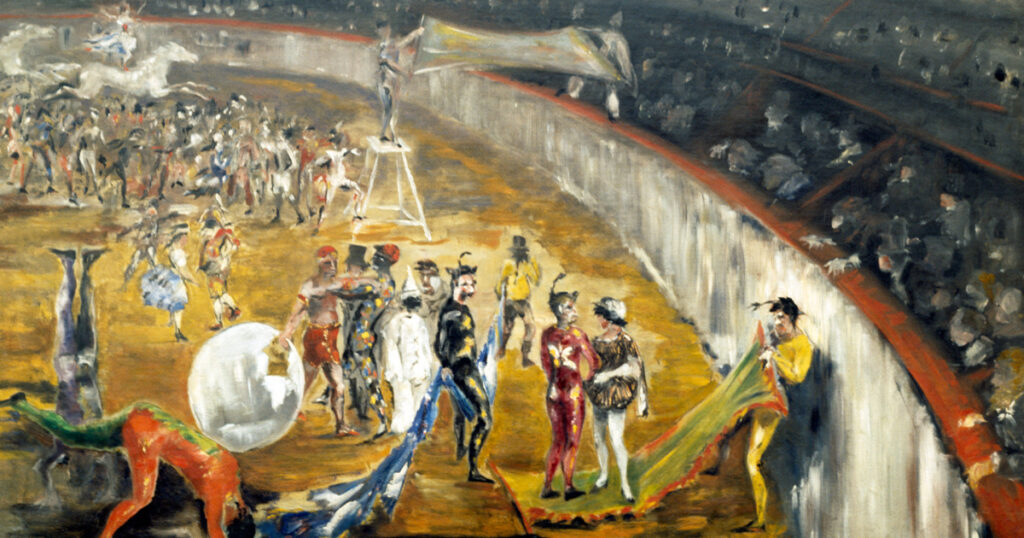
“My life is a tango, my heart a Grand Guignol,” declared Max Jacob in his poem “Romantic Allusions to Mardi-Gras.” He could have listed many other such contradictions. Born in Brittany in 1876 to a secular Jewish shopkeeping family, Jacob was a convert to Roman Catholicism, a gay man who feared he would go to hell for his loves, a bohemian who spent 14 years as a lay associate of a Benedictine monastery, a provincial who hobnobbed with the Parisian elite. Picasso’s first French friend and guide to French life, Jacob helped to revolutionize the art of poetry as Picasso was reinventing painting. And although Jacob is known primarily as a writer—the author of Le Cornet à dés (The Dice Cup), a collection of radical prose poems from 1917, the equally inventive verse poems of Le Laboratoire central (The Central Laboratory) in 1921, and the experimental fiction of Cinématoma in 1920—he painted for most of his life, and it was his art that paid the bills.
Two huge facts color any account of Jacob’s life. One is the intense friendship with Picasso, which lasted, with ups and downs, from their meeting in 1901 until Jacob’s death on March 5, 1944, in the Nazi transit camp of Drancy. The circumstances of that death constitute the second massive fact. Jacob died as a Jewish victim of the Nazis and the Vichy collaboration, spared the trip to Auschwitz only by the pneumonia that carried him off two days before his scheduled transport. But he didn’t live as a victim. His life, in its whimsy and passion, mysticism and worldliness, deserves to be seen in its own light.
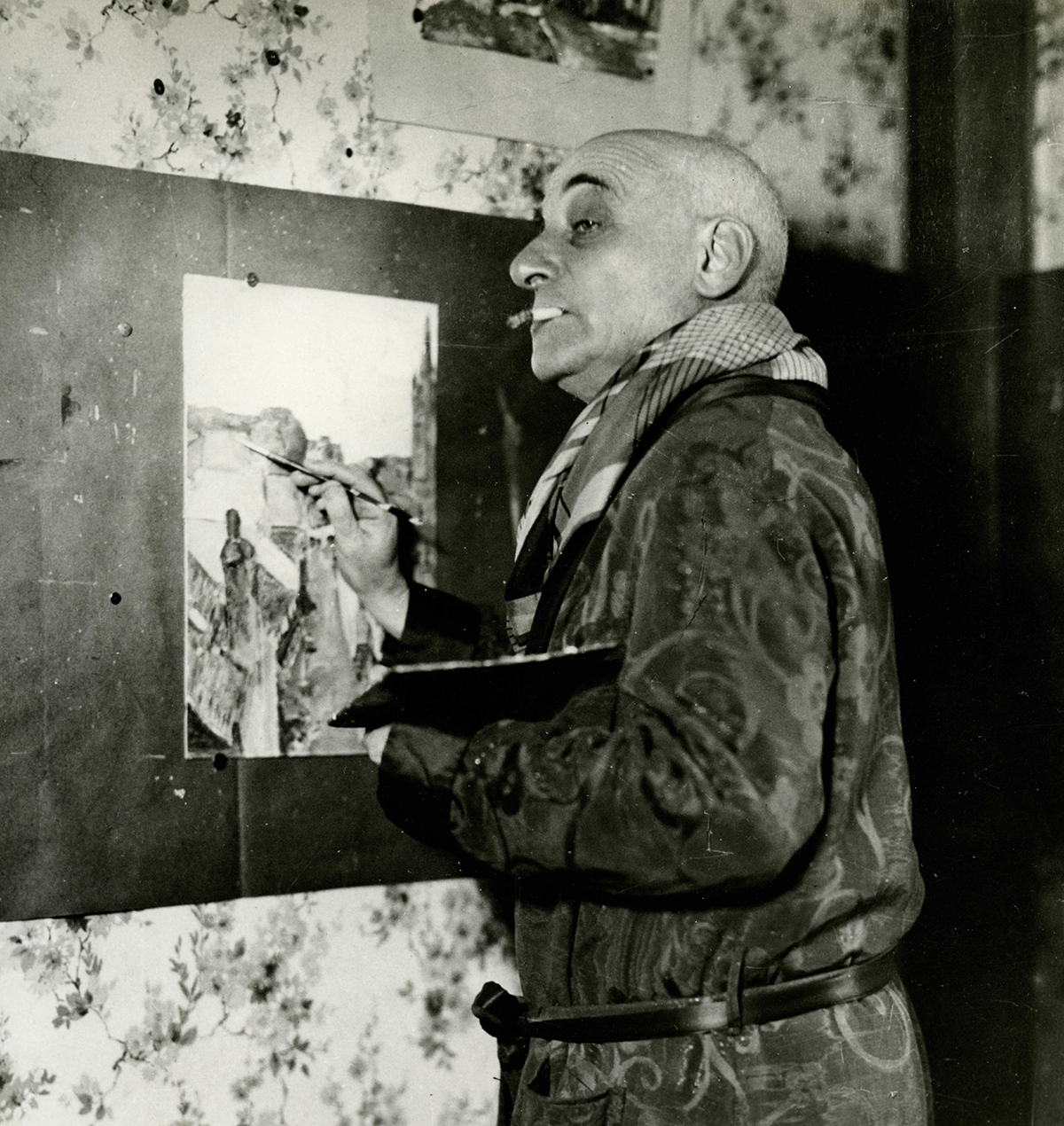
Max Jacob in France (Superstock/Alamy)
Jacob came to Paris in 1894, at age 18, to pursue studies at the École coloniale and law school after succeeding brilliantly in the lycée in his hometown of Quimper. He showed little enthusiasm for colonial administration or law, and quickly gravitated to the arts. He did earn his law degree in 1898, but by the time he met the 19-year-old Picasso, he had spent a year as an art critic while trying his hand at painting at the Académie Julian. He was desperately poor, living hand to mouth by odd jobs, and already fiddling with poems.
Meeting Picasso, Jacob later wrote, was “the most important revelation of my life except for the revelation of the existence of God.” Amazed by the young Spaniard’s paintings, which he first saw in a gallery show in June 1901, Jacob left a note for the artist, whose Catalan agent invited him a few days later for a meeting. Though Picasso could hardly speak French and Jacob had no Spanish, an ardent friendship sprang up, and when Picasso returned to Paris two years later, poverty-stricken and unable to sell his morbid Blue Period paintings, Jacob came to the rescue. For several months, Jacob and Picasso shared Jacob’s little room, living on Jacob’s meager earnings as a clerk in his cousin’s department store. On his third venture to Paris in 1904, Picasso established himself in a studio in Montmartre, in the ramshackle cluster known as the Bateau-Lavoir, the Washerwomen’s Barge. Jacob visited every day. This studio became the “central laboratory”—to use Jacob’s phrase—for modernism, as Picasso and Georges Braque, and then Juan Gris, broke through into the new pictorial language of cubism, and Jacob, soon joined by Guillaume Apollinaire, cracked the old verse conventions into a new poetry of discontinuity, free association, and dreamwork.
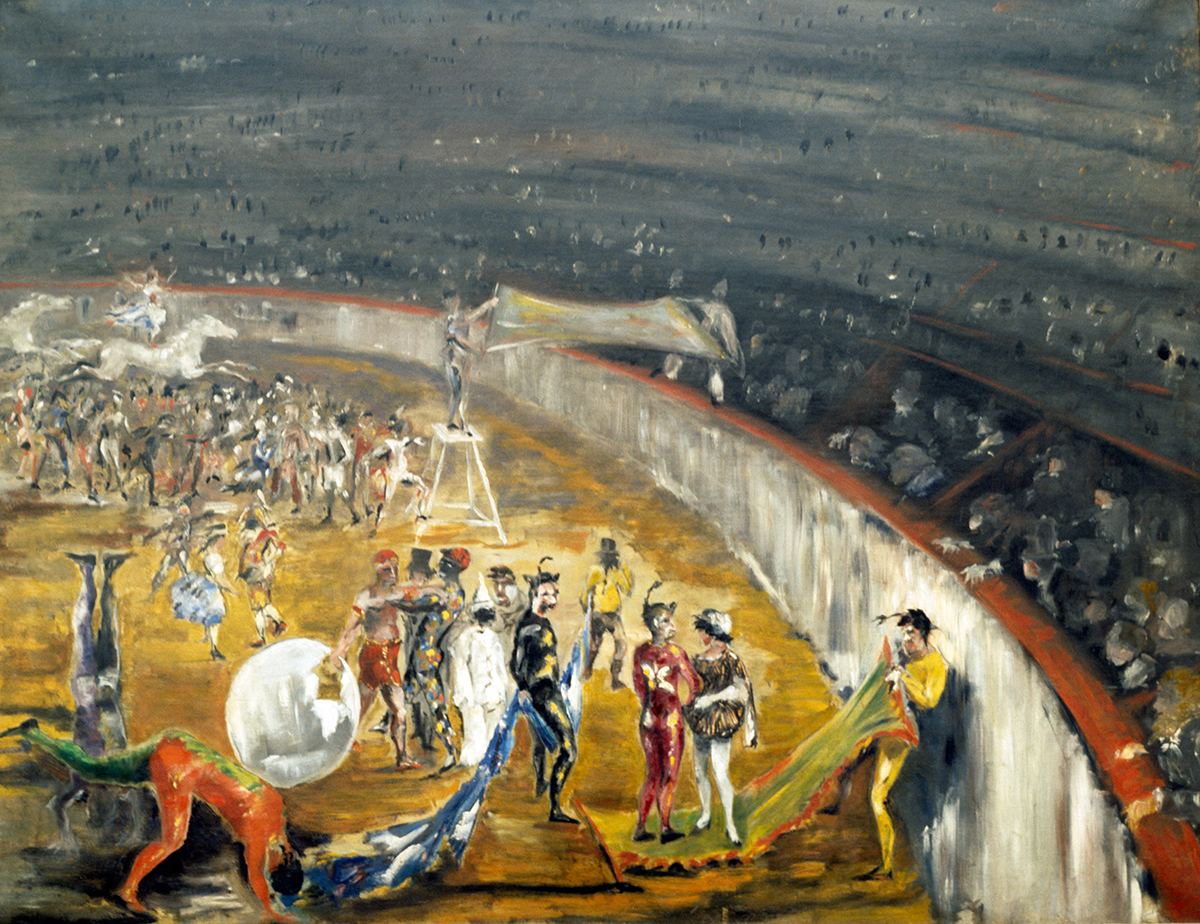
In his 1912 painting At the Circus, a work representative of a “sweet, almost childlike idiom,” Max Jacob may have been inspired by his friend Pablo Picasso’s harlequins. (ColaImages/Alamy)
Jacob was a mystic. In 1909, he saw Jesus Christ appear on the wall of his shabby room on la rue Ravignan, just down the street from the Bateau-Lavoir, and in 1915 he was formally received into the Catholic faith, with Picasso as his godfather. From 1921 to 1928, and again from 1936 until his death in 1944, he lived in retreat in the village of Saint-Benoît-sur-Loire, in association with the Benedictine basilica there. Though his writing is populated by demons and angels, his painting is charmingly down to earth.
Jacob never dreamed of rivaling Picasso, Braque, or Gris in the field of art. Utterly unpretentious, his gouaches, painted with cigarette ash, coffee stains, and spit as much as with pigment, present fey scenes of Breton village life and landscapes, glimpses of Paris, and, occasionally, biblical figures. The line is wavery, the color delicate, but the compositions are always assured.
“I wasn’t a Cubist,” he explained to a friend, “1. because hearing of nothing else I was delighted to think about other things. 2. because it wasn’t in my temperament. 3. because I would have wanted to be the best and I wasn’t capable of it … 9. because Cubism strikes me as ugly and I love—pretty things, alas! … 12. because in fact, I’ve made many Cubist drawings. 13. all this is Picasso’s fault.”
Dealers took Jacob’s work seriously. During the 1920s, his paintings were featured in several well-received shows in Paris that provided enough money to sustain him temporarily. One of these exhibits, held at the Briant-Robert gallery in 1928, was attended by Picasso, Jean Cocteau, Francis Picabia, and Henri Sauguet, among other luminaries. Picasso drew a portrait of Jacob for the catalog, depicting his friend as a Roman consul. The sale of Jacob’s art in the late 1920s was complicated by the machinations of his unscrupulous, not to say criminally exploitative, lover Maurice Sachs, who for a while took over as his dealer. Sachs soon fled to the United States, and when he returned to France, he betrayed Max Jacob by publishing a vicious, anti-Semitic portrait of him in the 1935 roman à clef Alias. (Under the Occupation, Sachs collaborated with the Nazis and was murdered— either by fellow prisoners or by guards—on a forced march from a work camp in Germany in 1945.) Jacob’s last one-man show was at the prestigious Georges Petit gallery in 1930, the opening attended, once again, by le tout Paris. The sales were substantial. But the Depression was hitting France, and the gallery didn’t renew Jacob’s contract. In his last years, his loyal young friend Pierre Colle represented his work and eventually became his heir and literary executor.
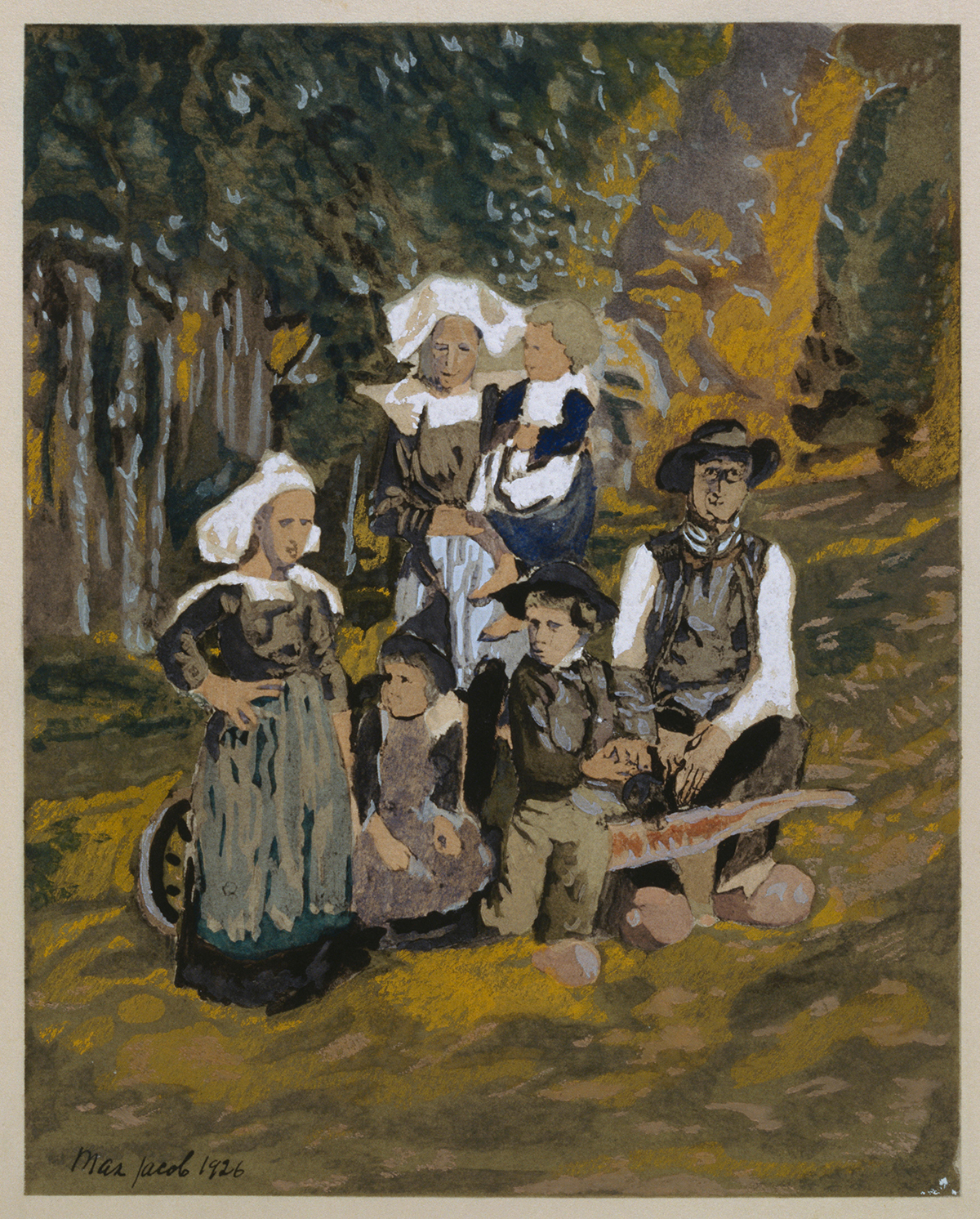
The Coast shows Jacob’s fondness for painting the people and rural fashions of his native Brittany. (World History Archives/Alamy)
Jacob’s paintings are animated by fantasy, fluidity, and freedom. A gouache from 1912, At the Circus, recalls Picasso’s scenes of harlequins and circus performers, though in Jacob’s own sweet, almost childlike idiom. In the vast arc of the circus ring, a horse seems to float while galloping in the background, and in the foreground an acrobat does a handstand by a giant ball. A male and a female performer stand pensively while a third seems to pull a carpet out from under them, with others attending to their tricks in a dream state.
In his heart, Jacob remained deeply Breton. His family’s shop in Quimper specialized in the traditional Breton brocaded outfits: for men, white shirts, dark trousers, vests, and hats; for women, long skirts and the brilliant white lace bonnets called coiffes, differently shaped depending on the town in which they were made. Fêtes à Quimper, from 1930, depicts a typical outdoor festival, the dancers, men and women, seen from the rear, hand in hand in a round dance in striking chiaroscuro, with the dark foliage of the elms of Mont Frugy just behind them and banners for the fête floating over their heads.
Many of Jacob’s paintings depict scenes that he knew from his youth as well as from his summer visits to the countryside of his birth. Part of what drew him to Catholicism, moreover, was the picturesque, ceremonial, folkloric pageantry of the Breton faithful. The Coast, from 1926, presents a close-up of Breton peasant life. A family poses for a formal portrait. The statuesque mother stands, a toddler on her arm, her dazzling starched coiffe in full sail over her head, and her long white apron defining her as a column around which cluster three children. Her husband, in his dark broad-brimmed hat and dark vest, sits beside them, reaching out to his son. These people lived bitterly hard lives as fishermen and farmers working the rocky soil while taking seriously the roles and costumes that dignified their culture.
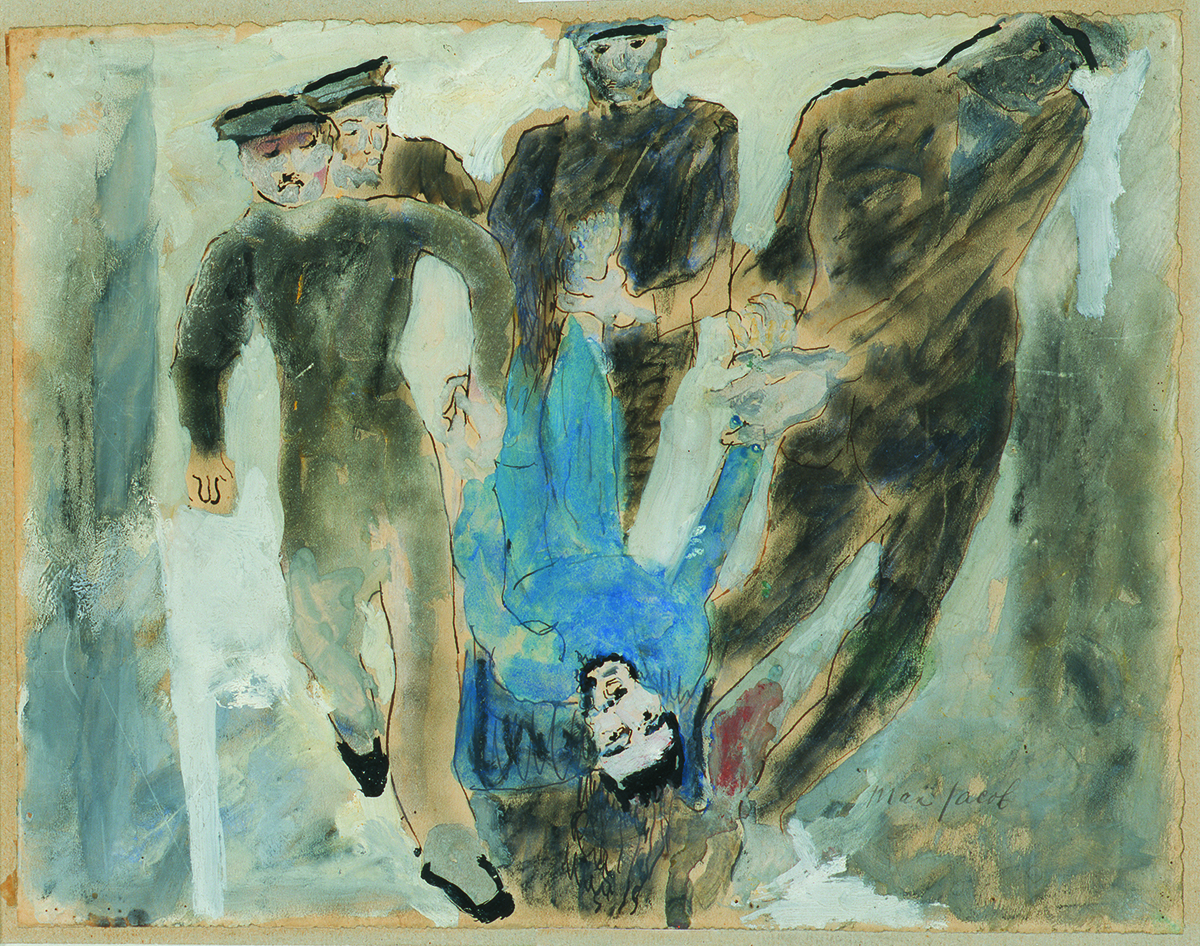
The Nazi horror depicted in Vision of the War (Francois Laugine, courtesy of Orléans, Musée des Beaux-Arts)
Jacob’s last paintings, not surprisingly, register a grim change. France fell to the Germans in June 1940, and the Third Republic collapsed, replaced by the authoritarian state centered in Vichy and headed by the 84-year-old hero of the Great War, Maréchal Philippe Pétain. Immediately, Vichy began promulgating anti-Semitic laws, expelling Jews from their professions and seizing their businesses and homes, before the Gestapo started herding them into camps and deporting them to their deaths. Jacob’s gouache Vision of the War, from around 1943, depicts this horror. Four dark Gestapo figures with expressionless slits of eyes and identical caps are dragging a man, upside down, by his arms and legs. His terrorized, bearded face, at the lower center of the painting, anchors all the agitation, as the blue of his suit directs the flow of our attention down to his astonished mouth. It’s a powerful work of art, not just documentary.
Jacob’s final painting, left unfinished on his table when the Gestapo arrested him in his rented room in Saint-Benoît on February 24, 1944, was a portrait of Picasso. The famous painter, older now, and stocky, with a scarf knotted around his neck, gazes back over his left shoulder with his deep-set, mesmerizing eyes. It has been said that Picasso betrayed Jacob by refusing to sign a letter to the German authorities pleading for his release. He did say to Jacob’s friends Pierre Colle and Henri Sauguet, who came to ask his help, “Max is an angel. He can fly over the wall by himself.” Sauguet described the scene to me. But the situation was complex. Picasso was a resident alien in France, and vulnerable to deportation to Franco’s Spain. He did go behind the scenes to the collaborationist Georges Prade, offering to sign an appeal on Jacob’s behalf. Prade dissuaded him, arguing that the gesture would carry no weight with the Gestapo.
Two weeks after Jacob’s death, a reading of Picasso’s play Le Désir attrapé par la queue (Desire Caught by the Tail) took place at the apartment of Louise and Michel Leiris, an event attended by the intellectual aristocracy of Paris. There, Picasso’s 1915 pencil portrait of Jacob was set up in the place of honor, and presided.

